Christian Gottlieb Hammer (1779 Dresden - 1864 ibid.): Arcadia is everywhere, 1855, Pen drawingTechnique: Pen drawing on Paper, mounted on PaperInscription: Signed and dated in the lower centre: " C. G. Hammer invt. et del. Dresd. 1855"Date: 1855Description: Christian Gottlob Hammer remained committed to his hometown of Dresden throughout his life. He had studied at the academy there from 1794, where Johann Philipp Veith in particular had taught him since 1798 and also introduced him to printmaking techniques. In 1816 he became a member of the academy and in 1829 he was appointed associate professor. His works were popular in broader circles beyond the confines of his teaching. Johann Wolfgang Goethe, for example, esteemed him as a "skilful landscape draughtsman", visited him in his studio in 1810 and acquired some of his prints. Hammer's productivity was by no means limited to making drawings. He also developed an extensive printmaking activity, reproducing not only his own drawings but also designs by other artists. For the "Bilderchronik" of the Schsischer Kunstverein, he created prints based on works by Johan Christian Dahl, Caspar David Friedrich and Ernst Ferdinand Oehme, among others. The prints, which are based on his own drawings, often show landscapes, especially from Saxony, Silesia and northern Bohemia. For his 1855 drawing of a river-crossed landscape closed off by mountain ranges in the background, however, Hammer oriented himself less on the seen environment than on ideal landscape concepts such as those found among the Dresden artists of the late 18th century. In times of realism and plein air, he once again sets a vivid memorial to the art of drawing of the past. The calm, southern mood of the drawing is conveyed by the architecture in the middle ground as well as by the staffage. The herd of cattle being driven across the bridge by a shepherd, for example, is a common feature of Arcadian ideal landscapes. What is striking and gives the print a completely unique charm is the way the lines are drawn, which Hammer borrows very strongly from the medium of graphic art. All spontaneous and impulsive strokes as well as possible pentimenti, which would suggest the artist's immediate creative power, are absent in this print. Shadow and surface effects are also more in keeping with the requirements of the burin than those of the pen. It is precisely through this that the beautiful drawing unfolds the strict clarity of a copperplate engraving and thus expresses in an outstanding way Hammer's talent for consciously making use of the effects of the respective medium.Keywords: Landscape, Picturesque, Dresden, 19th century, Romanticism, Landscape, Italy, Size: 32,9 cm x 28,6 cm (13 x 11,3 in)Condition: Good condition. slightly spotted in margin.
Christian Gottlieb Hammer (1779 Dresda - 1864 ibid.): L'Arcadia è ovunque, 1855, Disegno a pennaTecnica: Disegno a penna su carta, montato su cartaInscrizione: Firmato e datato in basso al centro: " C. G. Hammer invt. et del. Dresd. 1855 "Data: 1855Descrizione: Christian Gottlob Hammer rimase legato alla sua città natale, Dresda, per tutta la vita. Aveva studiato all'accademia dal 1794, dove Johann Philipp Veith in particolare gli aveva insegnato dal 1798 e lo aveva anche introdotto alle tecniche di stampa. Nel 1816 divenne membro dell'accademia e nel 1829 fu nominato professore associato. Le sue opere erano popolari in circoli più ampi oltre i confini del suo insegnamento. Johann Wolfgang Goethe, per esempio, lo stimava come un "abile disegnatore di paesaggi", lo visitò nel suo studio nel 1810 e acquistò alcune delle sue stampe. La produttività di Hammer non si limitò affatto alla realizzazione di disegni. Sviluppò anche una vasta attività di stampa, riproducendo non solo i propri disegni, ma anche disegni di altri artisti. Per la "Bilderchronik" dello Schsischer Kunstverein, creò stampe basate su opere di Johan Christian Dahl, Caspar David Friedrich e Ernst Ferdinand Oehme, tra gli altri. Le stampe, che sono basate sui suoi propri disegni, mostrano spesso paesaggi, specialmente della Sassonia, della Slesia e della Boemia settentrionale. Per il suo disegno del 1855 di un paesaggio attraversato da un fiume e chiuso da catene montuose sullo sfondo, tuttavia, Hammer si orientò meno sull'ambiente visto che su concetti di paesaggio ideali come quelli che si trovano tra gli artisti di Dresda della fine del XVIII secolo. In tempi di realismo e plein air, egli pone ancora una volta un vivido ricordo dell'arte del disegno del passato. Lo stato d'animo calmo e meridionale del disegno è trasmesso dall'architettura nella zona centrale e dal personale. La mandria di bestiame che viene condotta attraverso il ponte da un pastore, per esempio, è una caratteristica comune dei paesaggi ideali arcadici. Ciò che colpisce e dà alla stampa un fascino del tutto unico è il modo in cui sono disegnate le linee, che Hammer prende in prestito molto fortemente dal mezzo dell'arte grafica. Tutti i tratti spontanei e impulsivi così come i possibili pentimenti, che suggerirebbero l'immediato potere creativo dell'artista, sono assenti in questa stampa. Anche l'ombra e gli effetti di superficie sono più consoni alle esigenze del bulino che a quelle della penna. È proprio per questo che il bel disegno dispiega la rigorosa chiarezza di un'incisione su rame ed esprime così in modo eccezionale il talento di Hammer nel fare consapevolmente uso degli effetti del rispettivo mezzo: Paesaggio, Pittoresco, Dresda, XIX secolo, Romanticismo, Paesaggio, Italia, Dimensioni: 32,9 cm x 28,6 cm (13 x 11,3 in)Condizioni: Buone condizioni. leggermente macchiato in margine.

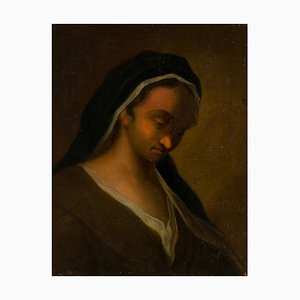
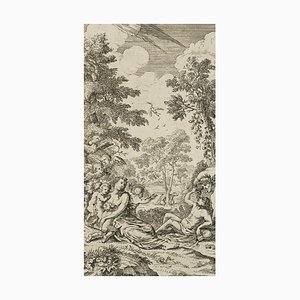
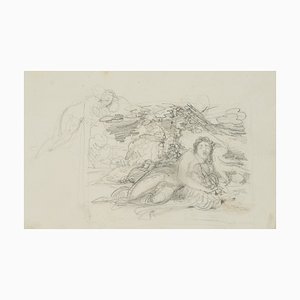
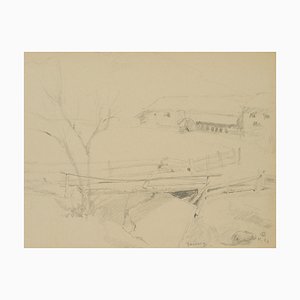
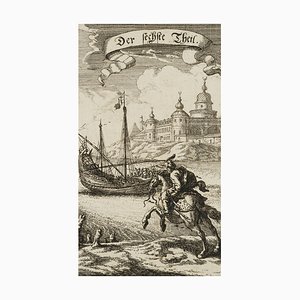

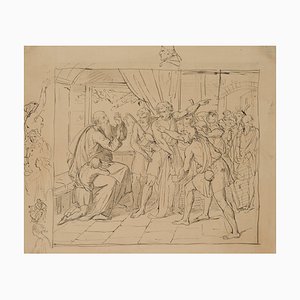

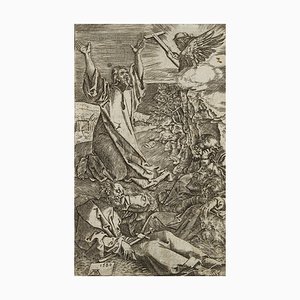
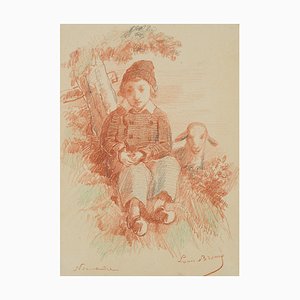

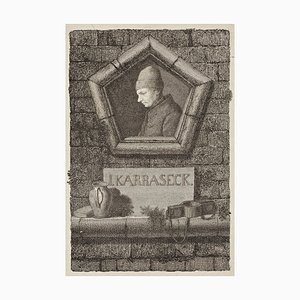
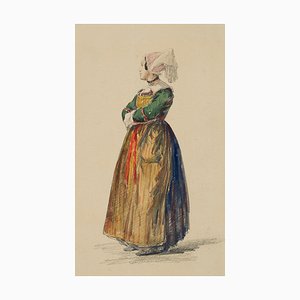
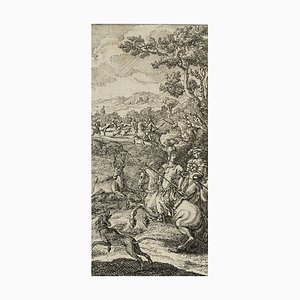
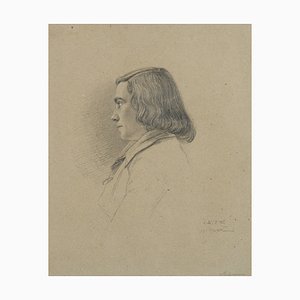
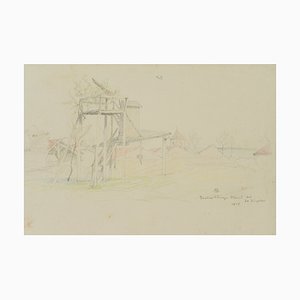
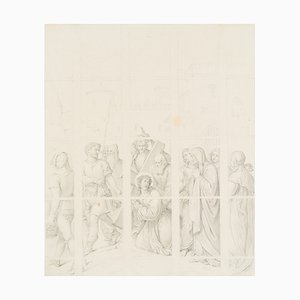
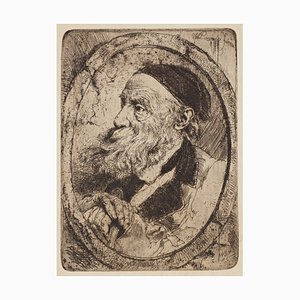

Contattaci
Fai un'offerta
Abbiamo notato che sei nuovo su Pamono!
Accetta i Termini e condizioni e l'Informativa sulla privacy
Contattaci
Fai un'offerta
Ci siamo quasi!
Per seguire la conversazione sulla piattaforma, si prega di completare la registrazione. Per procedere con la tua offerta sulla piattaforma, ti preghiamo di completare la registrazione.Successo
Grazie per la vostra richiesta, qualcuno del nostro team vi contatterà a breve.
Se sei un professionista del design, fai domanda qui per i vantaggi del Programma Commerciale di Pamono